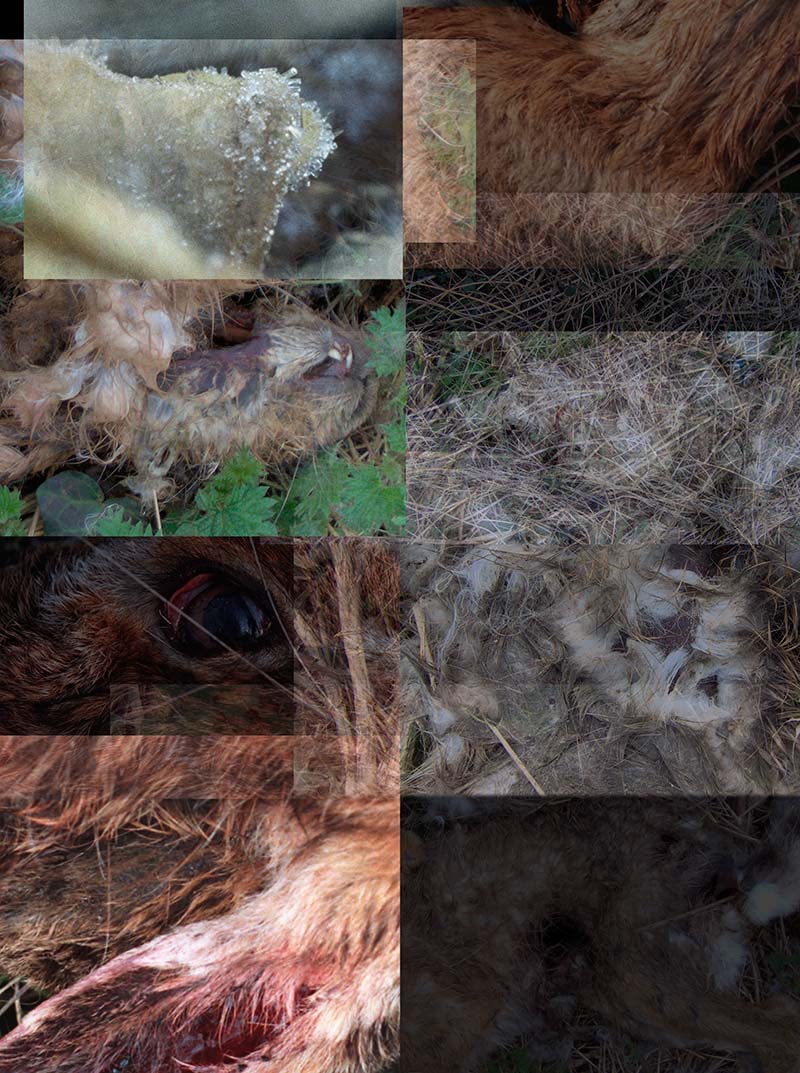
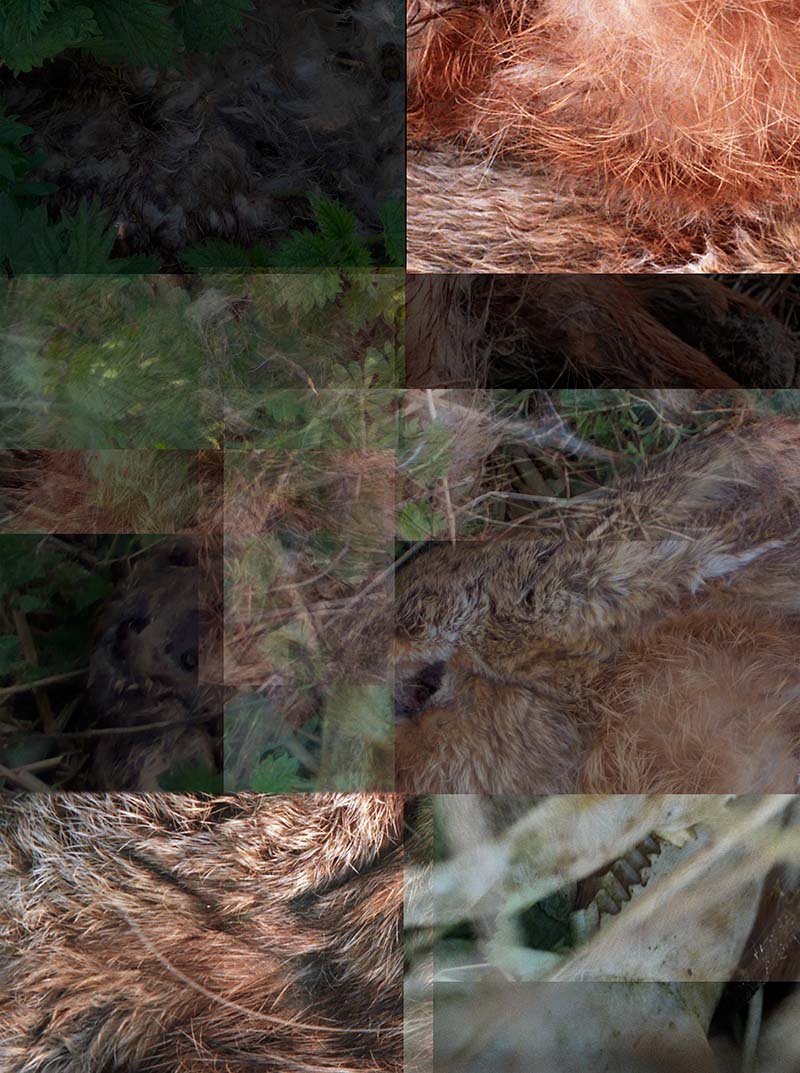
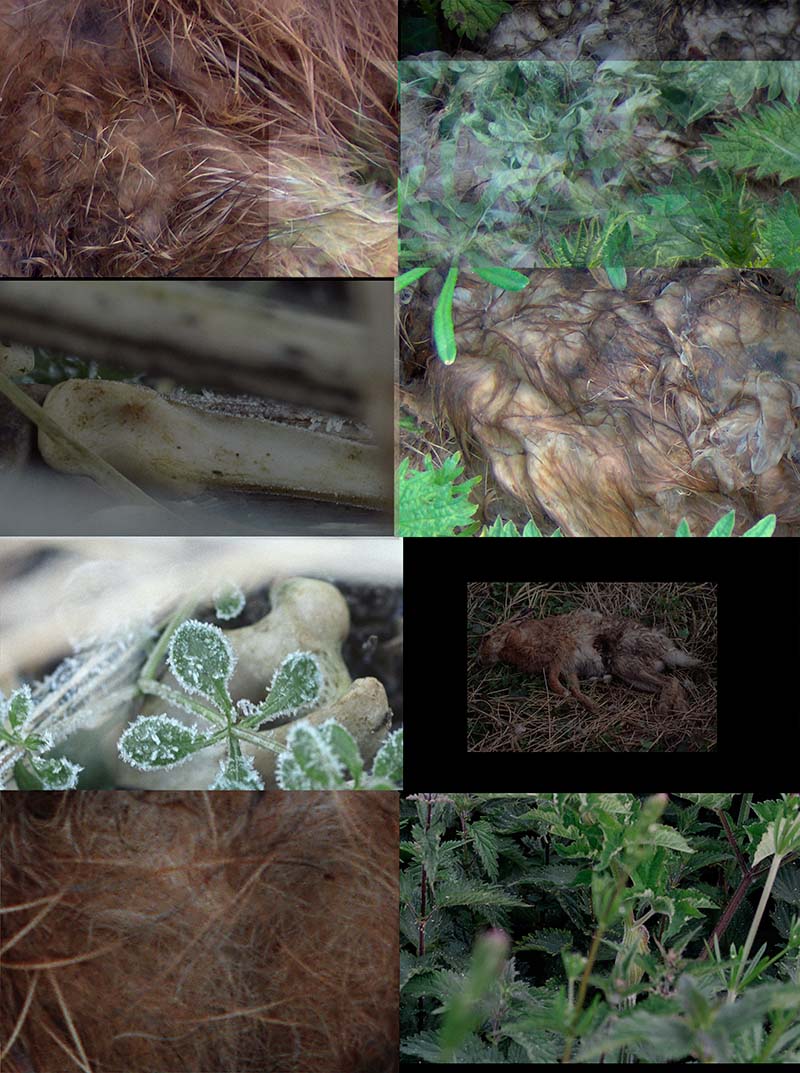
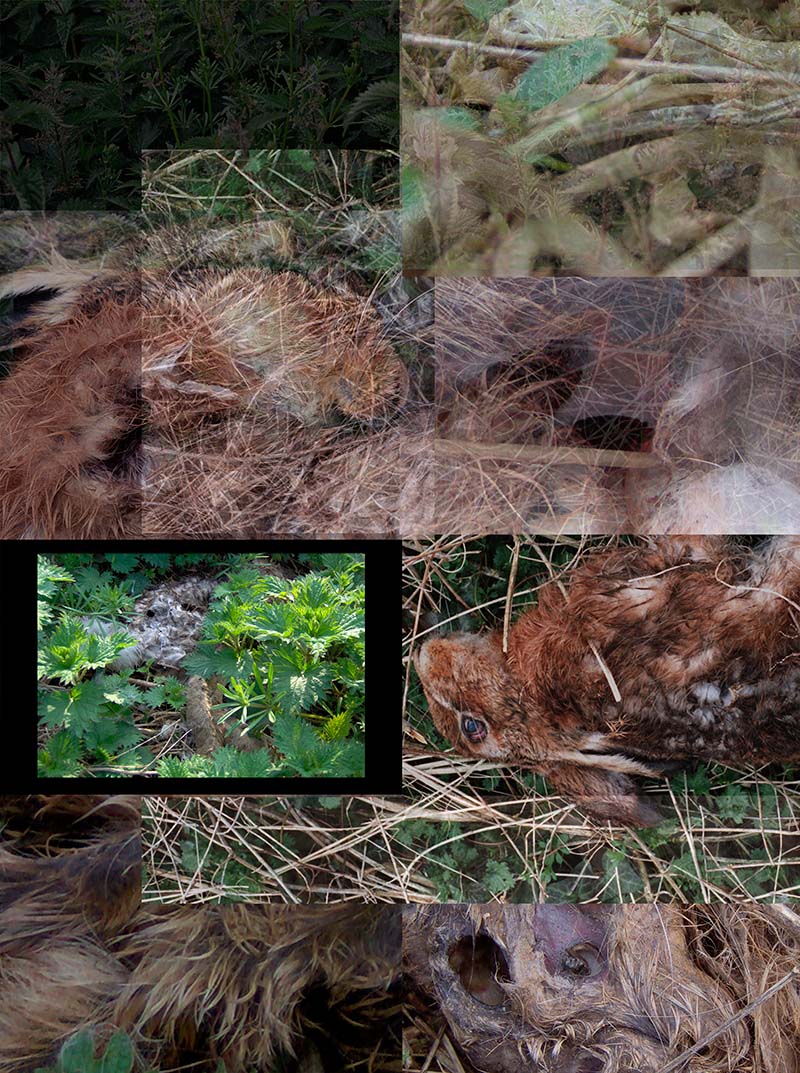
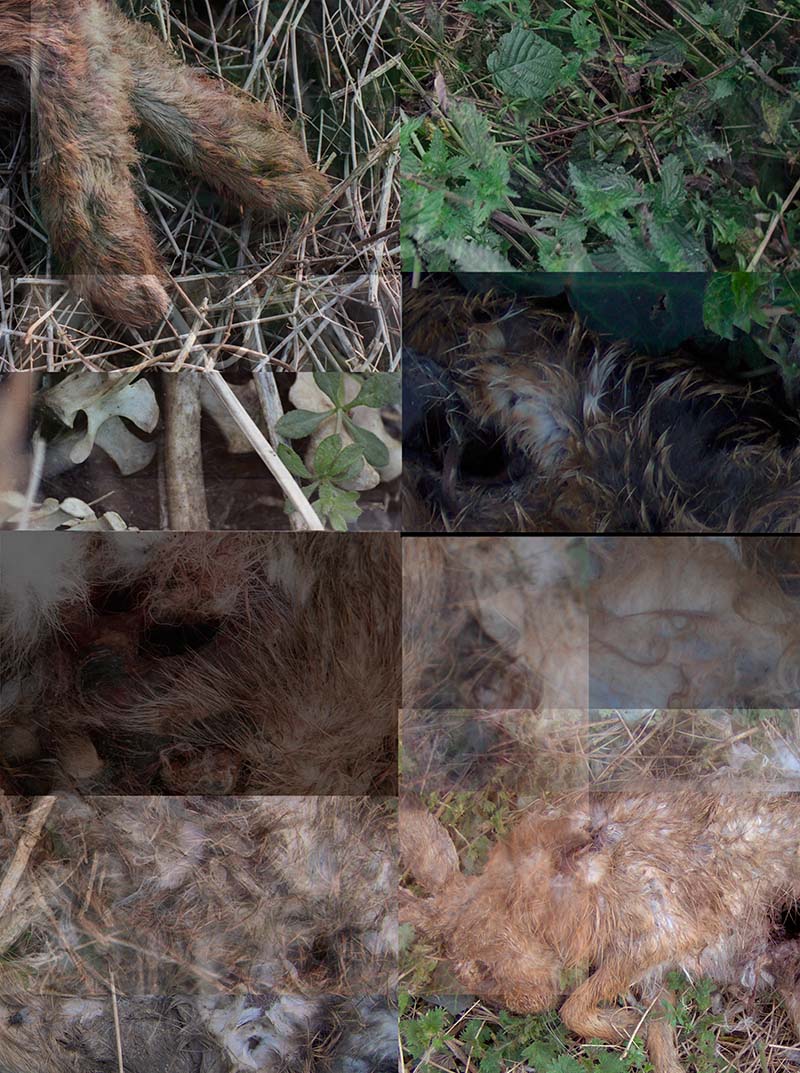
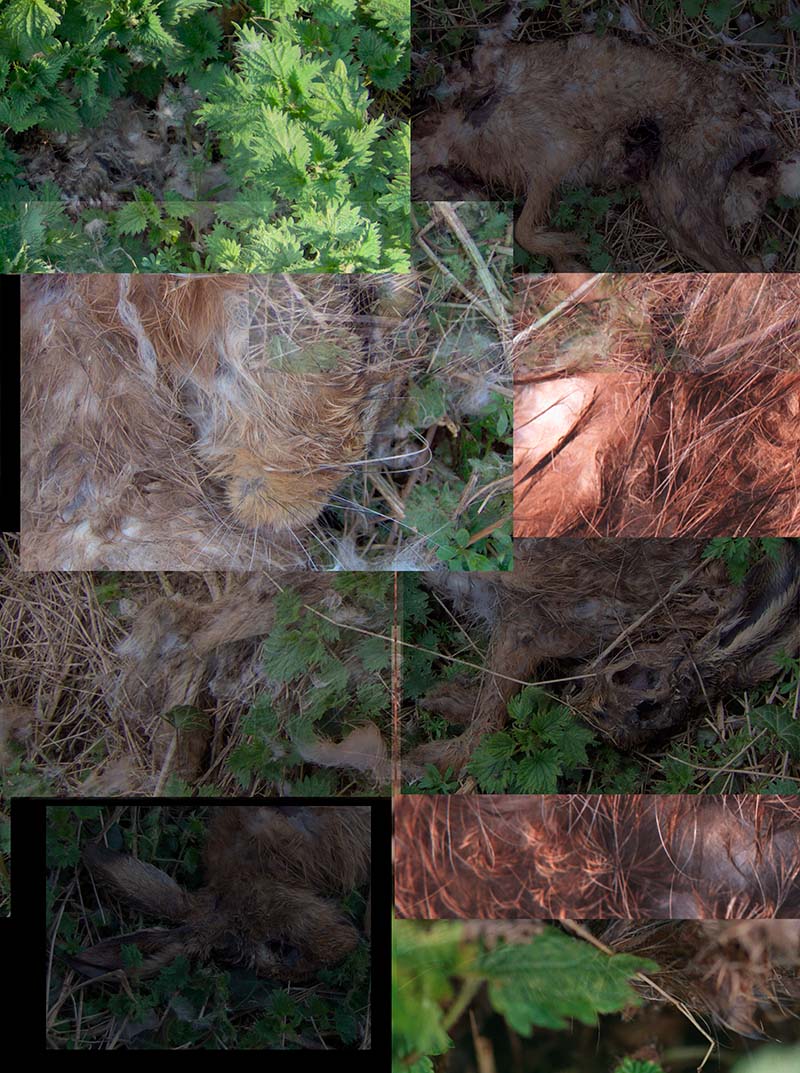
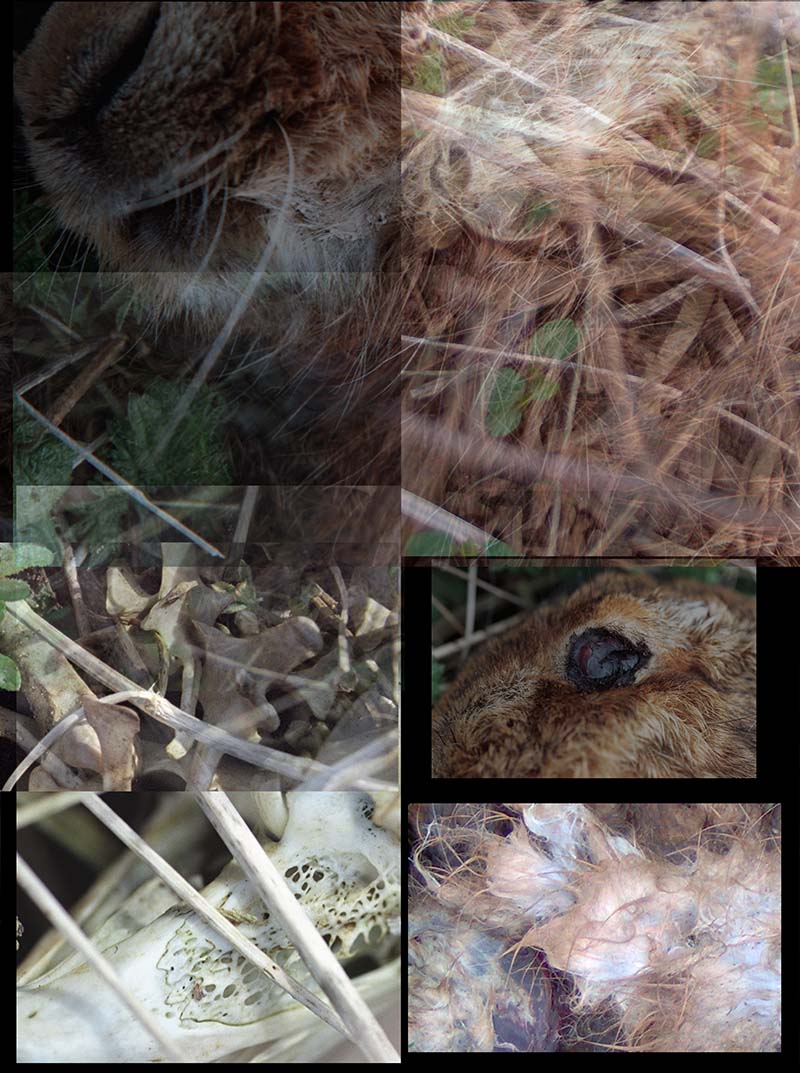
On the 11th March 2005, at about 8.40 in the morning, we had just left the junction at Shottisham, heading towards Alderton, when Kim suddenly said "What's that? Stop the car!". She jumped out and ran across the road to where the body lay. We quite often see hares dead on the road. They are soon crushed into a mess of blood and fur by the relentless heavy traffic. It seems that they have far more blood than a badger or a rabbit, so that after a carrion eater, or perhaps a caring passer‑by, has removed the remains of the carcass what is left is a hideous stain that splays out across the surface of the road: a broad smeared arc of deep black‑red that can last for weeks. "Still warm" Kim shouted back to me "Eyes are really bright. Not a mark on her. Oh, there's blood in her ear, must have been hit in the head". She carried the body down to the bank below the road and settled her on a bed of dead stems and the bright first leaves of the year's nettles. We resumed our journey.
At this time of year hares seem to become more active and we sometimes go out in the late afternoon to look for them: growth in the fields is still low so they can be seen more easily and the orange light of the setting sun touches their coats with copper and flame as they frisk and quick‑scut, skidaddle and race‑the‑wind [1] across fields that are now just beginning to fill with the thickening green of winter sown wheat. After work that day I cycled back to the B1083 and photographed our hare in the last half hour of light. Where she lay was a piece of marginal land below the road and above a field that for nearly five years had been "Set aside"[2]: a long, thin, flat strip that before the flood defences were built would have been under the water of the Shottisham River, then a tidal creek that joined the River Deben about four miles away. I returned frequently over the next few days. Then less frequently as the year progressed and the nettles grew over her and she became completely obscured. As spring approached again, I remembered her and returned to find what remained: a few bones among the intricate mass of dead stems and another year's first growth of nettle, goose grass and ivy.
An Egyptian hieroglyph, that in essence means "to be" and has to do with creation, becoming and existence, shows a hare over a ripple of water[3]. This seemed right for our hare, lying above the dried up tidal river as she reintegrated into the organic surface of a ground that is dense with millennia of being. A small dead animal decomposing at the side of a country road might seem of peripheral interest, even if her species is known to have been here a million years before Homo Sapiens appeared [4]. But I felt drawn to observe and photograph her progress over the course of a year, and then to look deep into the detail of the images, enlarging and cropping, layering and laying them out. Trying all the time, like her, to accept contingency, chance and incidence: like the fall of bones and the ingress of foliage. I saw a million tiny details and conjunctions, swirling galaxies of fur and black holes forming in tautened, fissured, skin. She seemed calm and self possessed as her living form dissipated in one, year long, heartbeat of the earth. She relaxed in absolute dignity to take her place in the universe - while I clung, agitated, distracted, always striving and uneasy, to this narrow strip of the earth, this margin of time.
The images below show a work of seven panels made in April 2019 from photographs dating from March 11th 2005 to March 11th 2006.







Images and texts by P.F.WHITE (Peter Frankland White). ACTIVE: 196Os to the present. LOCATION: Europe (United Kingdom). SUBJECTS: vision, perception, location, time(s), class, power, rhilopia. STYLE: exploratory, aggregative, aleatory, attentive, punctum averse.
All material (except where otherwise acknowledged) is © Peter Frankland White, , and may not be reproduced in any form without written consent. See: Notes on Rights, Ethics, Privacy and Consent. Page design by Allpicture.